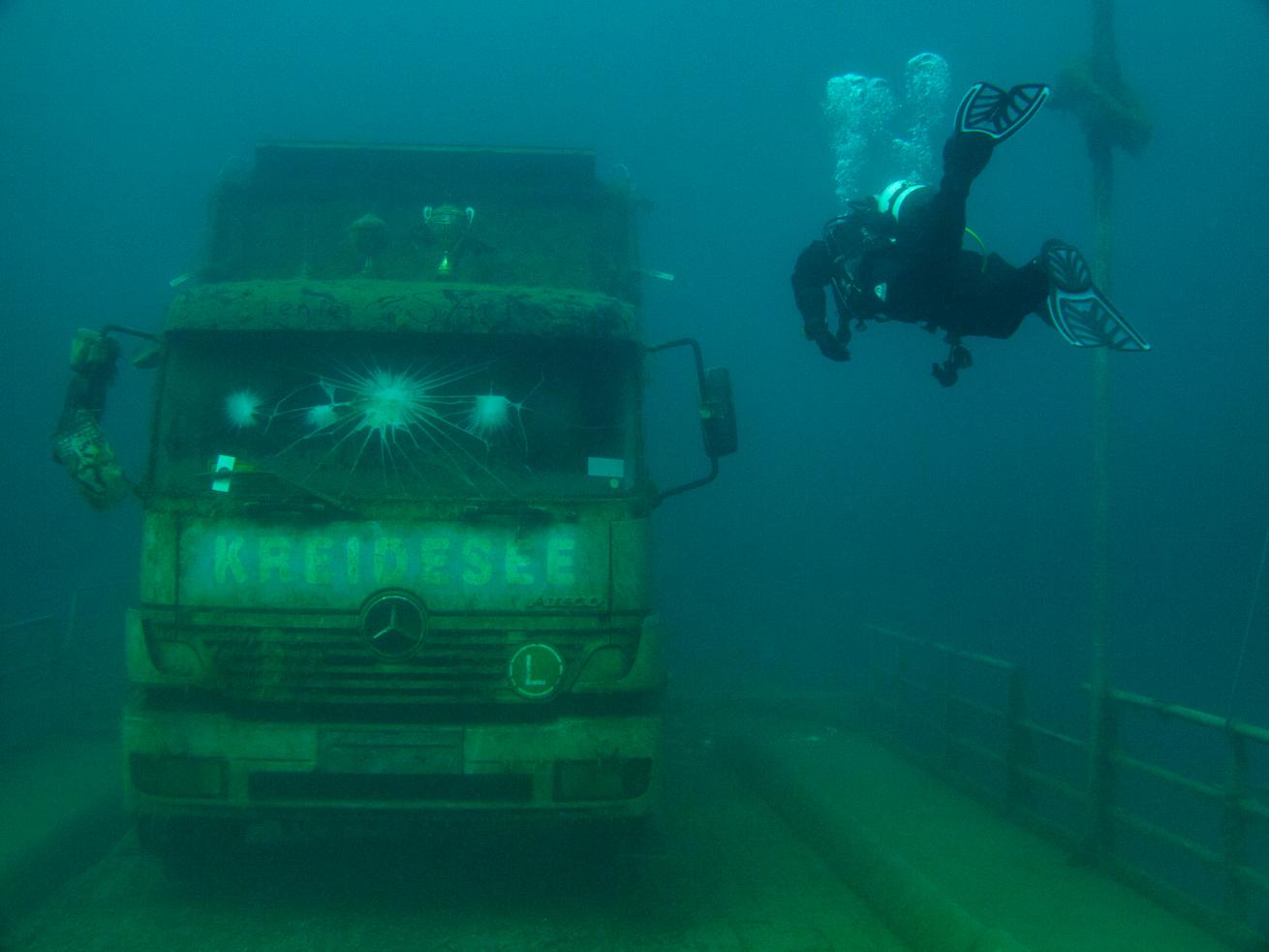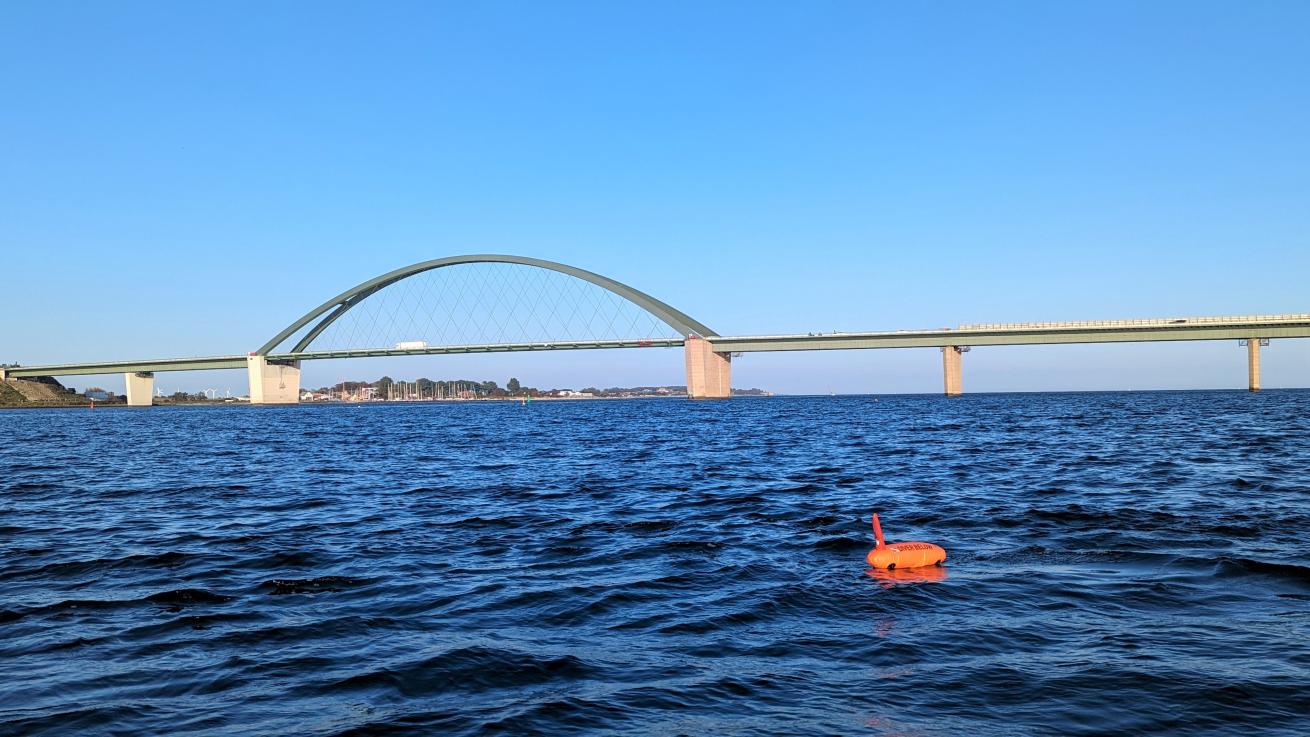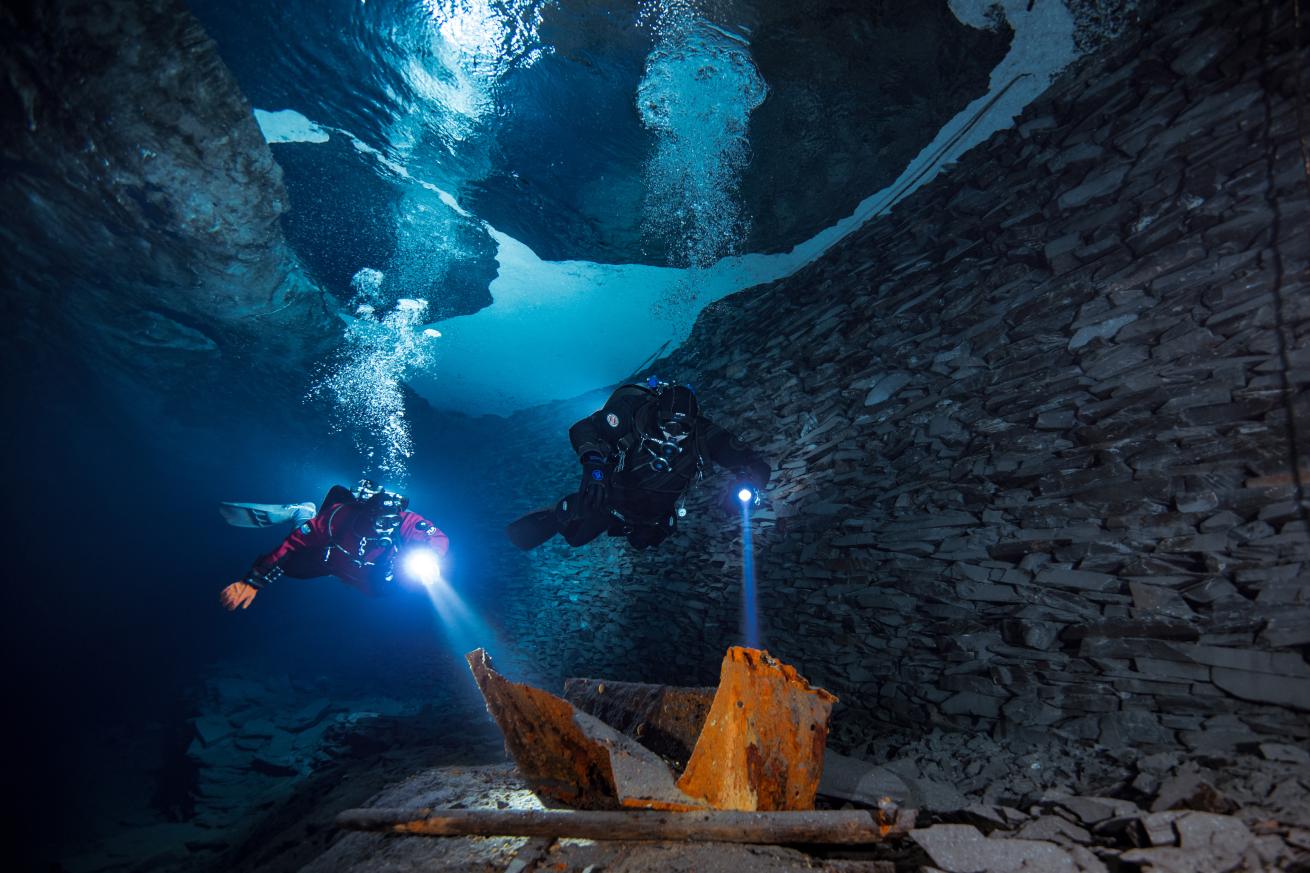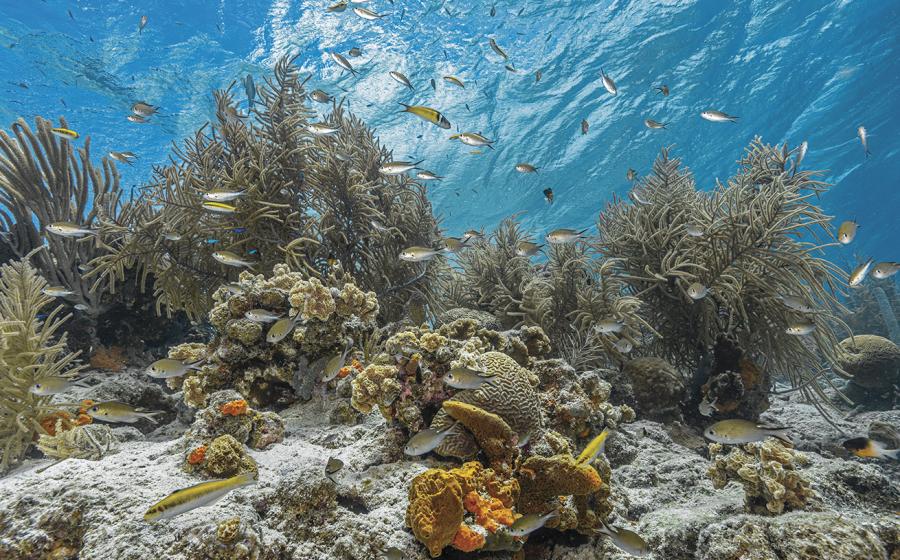Top 5 Places to Dive in Germany
Yes, Germany’s waters are cold and sometimes murky. However, there are several prime dive spots across the country worth exploring. From flooded chalk pits to World War II wrecks, discover Germany below the surface.

Bianca KlementHemmor - There are many hidden treasures in the chalk lake Kreidesee
Crystal Clear Waters in Hemmor
The Kreidesee in Hemmor, approximately 55 miles west of Hamburg, may be Germany's most popular freshwater dive site. With a maximum depth of 200 feet and visibility of more than 80 feet, we can see why thousands of recreational, technical and freedivers are drawn to the flooded chalk pit year round.
Related Reading: Pensacola's Underwater Wonderland of Artificial Reefs
The chalky-white bottom and sparse vegetation make it feel like you are diving in a tile-lined blue pool on a sunny day. Underwater relics of a former cement factory have been preserved over time, and you can comfortably dive along the old paved road, float up the conveyor belt near the steep slope, or explore an old truck at a depth of 100 feet. Don’t miss the model of a great white shark and a plane that floats around 30 feet, just below the thermocline.
The dive site also features a campsite and a few vacation rentals.
Visit: kreideseetaucher.de

Ostseebasis FehmarnBelow the surface at Fehmarn Island
Wreck Diving in the Baltic Sea
Diving in the Baltic Sea is well worth the effort, even if the water temperatures usually remain below 68 degree F, even during the summer months. However, the brackish seawater hosts many treasures. Just beyond mussel beds, lush seagrass meadows, and stone fields, there are thousands of wrecks, including old Viking Ships. According to some estimates, there may be up to 100,000 wrecks scattered along the bottom of the Baltic Sea. One of Germany’s best Baltic wreck diving locations is along the northernmost Fehmarn peninsula, which is famously the location of Jimi Hendrix’s final concert.
Interested in wreck diving? Join PADI Club today and save 20% off your PADI Wreck Diving eLearning material
Fehmarn’s waters offer several underwater attractions close to shore at comfortable depths between 30 and 50 feet. Divers should be prepared for currents and poor visibility, but if you embrace the challenge, you can explore historical tall ships or even World War II wrecks. An advanced but popular dive site is the Burg VS 54, which is a 145-foot long former fish trawler dating back to 1937 that sank during World War II after hitting a sea mine. Another diver favorite is the drift dive under the famous 800-foot long Fehmarnsund Bridge.
Fehmarn is the perfect starting point to explore northern Europe. The Danish coast is only 12 miles away.
Visit: ostseebasis-fehmarn.de
Tauchsportzentrum NordhausenSundhäuser See
Underwater Village at Sundhäuser See
Lots of fish and first-class visibility all year round attract visitors to the Nordhäuser Seenplatte in Thuringia. Be sure to check outLake Sundhäuser, the gem of the five quarry ponds that make up this inland dive site.
Explore large carp, perch, pike and even sturgeon, and the must-see highlight: the (artificial) underwater town of Nordhusia. In addition to towers, half-timbered houses, and historic walls, there is even a church - including a cemetery.
Visit: actionsport-nordhausen.de

Susanne SchmidtNuttlar mine
Mine Diving in North Rhine-Westphalia
One of the most exciting diving spots in the country awaits on the edge of the river Ruhr. The former Nuttlar slate mine is the largest diveable mine in Germany, and it consists of two underground flooded levels that stretch over seven miles.
Related Reading: Diving Germany—Lake Constance is Calling
To access the dark waters of the site, you descend through a yellow container about 90 feet into a tunnel. The mine is preserved exactly as it was left by the workers in 1985, even the original jackets still hang in the break room. Experienced cave divers can explore the old tunnels at length, and even non-certified cave divers have the chance to take a peek underground.
There is a small lake at the entrance where you can surface at any time—even though you are underground. If you feel comfortable in an overhead environment, there are classes to take your first steps toward becoming a certified cave or mine diver.
Visit: bergwerktauchen.de
Walchensee: Diving with mountain views in Bavaria
Lake Walchensee is one of Germany’s deepest and largest Alpine lakes. This diving hot spot lies at an altitude of 2635 feet, just an hour's drive from Munich on the northern edge of the Bavarian Alps. Pike, char and perch frolic on the steep slopes of the crystal clear waters, which can reach depths of over 600 feet. The turquoise lake is home to plane and car wrecks, and if you are lucky, you might even discover a lost treasure. If there is any truth to the myth, a cache of gold from the nearby Benediktbeuern monastery is hidden somewhere in the depths of the lake.
Visit: www.walchensee.net










